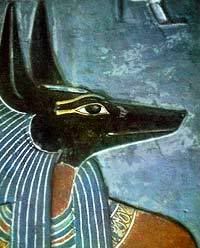
It's official: King Tutankhamun's death was most likely caused by a badly broken and infected leg, refuting murderous theories about the famous Pharaoh's demise 3,300 years ago, according to Egyptian radiologists.
Ever since King Tut was first examined by x-ray in 1968, revealing what appeared to be a fractured skull, it has been believed that the he was killed by a blow to the back of the head. Turmoil and religious upheaval in Ancient Egypt during his reign supports the theory that the boy king met a violent end.
However, recent medical imaging of the mummy refutes this widely accepted theory, presented today at the annual meeting of the Radiological Society of North America. "There was no evidence of violent premortum trauma to the skull," according to Ashraf Selim, from the Cairo University in Egypt. "But there is a possible femoral fracture that may have led to his death."
Other, smaller leg fractures led the team to conclude that King Tut was likely involved in an accident days before his death, in which he broke his leg badly. Although the break itself was not life-threatening, it would have left an open wound which could have become lethally infected.
The images revealed no evidence of a skull fracture, and the researchers believe the loose bone pieces in the skull, imaged in 1968, originated from a mishap during mummification which broke off parts of the first vertebra.
King Tut ascended to the throne when he was only 8 years old, died at the age of 19 and was entombed in the Valley of the Kings in Egypt. His reign, in which all decisions are believed to be made by his advisor Ay, was only moderately significant and many historians believe he was quickly forgotten. Ay, previously misidentified as the murderer, took the throne after King Tut's death.
However, King Tut became Ancient Egypt's most famous pharaoh when his tomb was discovered almost completely intact by Howard Carter in 1922. All other royal tombs had been completely empty when discovered, thanks to gold-hungry tomb-raiders.
Now, the mummy of King Tut remains in a terrible state. Carter's team was mostly interested in removing the jewelry from the Pharoh's body, which involved hacking the body into several pieces, as the jewelry was stuck to the body by resin. Since then, the mummy has been X-rayed twice, once in 1968 and once in 1978.
This time around, the researchers found some of the pieces reported missing in 1968, including the King's penis (see Cosmos, Issue 1, p 39), thumb and parts of the vertebrae lying loose in the sand around the body. This study is part of a five-year project to image and preserve what is left of Egypt's mummies.
"This is the first ever CT evaluation of an identified ancient Royal mummy," Selim said. The CT scan acquired approximately 19,000 2D x-ray images of the body, which was reconstructed to give a 3D image. The inventors of CT scanning won the Nobel Prize for Medicine in 1979, because of the significant advances over 2D x-ray images. Radiologists use it to differentiate between various types of soft tissue and bone. Most importantly for fragile mummies, the body does not have to be moved repeatedly.
(SOURCE , 2SOURCE)






No comments:
Post a Comment